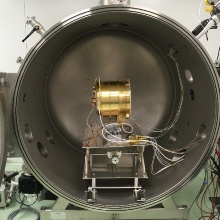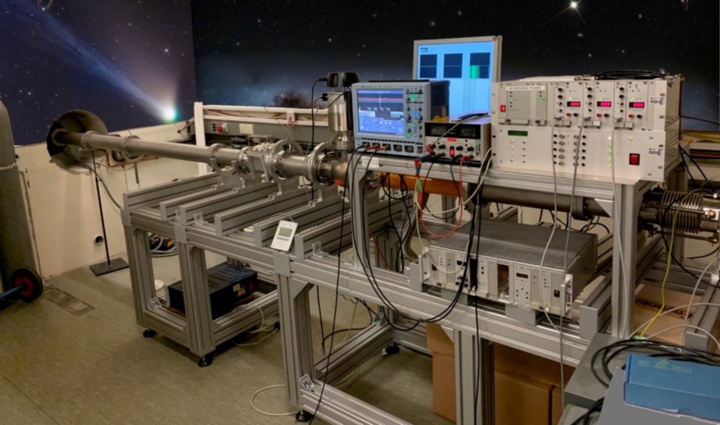After the Stuttgart Dust Accelerator (SDA), the only electrostatic dust accelerator of its kind in Europe, has successfully entered its second test phase, the IRS can again report a success: The engineering model of the heart of the DESTINY+ Dust Analyzer (DDA) has been integrated and is now being tested on the SDA dust accelerator.
This marks an important milestone for the planned DESTINY+ interplanetary space mission, as the DDA is the main instrument of the JAXA (Japan Aerospace Exploration Agency) DESTINY+ interplanetary German-Japanese mission. DESTINY+ stands for "Demonstration and Experiment of Space Technology for INterplanetary voYage" and after the great success of the NASA/ESA Cassini-Huygens mission, it is the next big step for dust astronomy scientists at the Institute of Space Systems (IRS) at the University of Stuttgart. The primary target of the mission is the asteroid 3200 Phaethon.
Stuttgart Dust Accelerator (SDA)
The SDA is a groundbreaking innovation, capable of simulating high-speed impacts of micro- and nanometeoroids by electrostatically accelerating dust particles to cosmic speeds at several megavolts. It began operating at the Institute of Space Systems (IRS) in spring 2022. This marked an important milestone for the planned DESTINY+ interplanetary space mission.
After successful completion of the first acceleration test phase, where essential properties of the particle beam were characterized and optimized, the scientists are now entering the second scientific test phase. The cosmic velocities needed to simulate the space environment have already been achieved in the facility built and operated jointly by IRS and the Materials Testing Institute (MPA). In the tests, iron particles of 70 nm were accelerated in a vacuum tube to particle velocities of up to 40 km/s. Such high relative velocities are particularly likely to occur especially when measuring interstellar dust with space probes in the solar system.
In order to achieve high velocities with larger nano- and microparticles, the accelerator's acceleration power is to be doubled during the next phase. At speeds of up to 100 km/s, interactions between projectiles and solids can be studied at the micro- and nanometer scale. In particular, the planned experiments are intended to support the development of instruments for the dust sensor for the Japanese DESTINY+ mission.
The SDA offer scientists a wealth of new opportunities, ranging from the simulation of impacts of interstellar and interplanetary dust particles to fundamental physics: impact processes on small bodies such as icy moons, asteroids or comets can be simulated and instruments for space-based applications can be developed and tested.
The accelerator is being built and operated under the direction of apl. Prof. Ralf Srama from the Institute of Space Systems at the University of Stuttgart.



